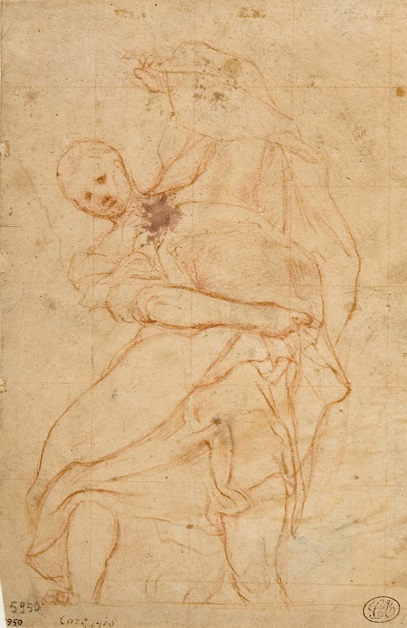
Click here to view image
Apostolo (disegno per il tamburo della cupola del Duomo di Parma)
disegno
Matita rossa, quadrettato a matita rossa, carta bianca ingiallita; mm. 172 x 115. Inv. D5950.

Click here to view image
Apostolo (disegno per il tamburo della cupola del Duomo di Parma)
disegno
Matita rossa, quadrettato a matita rossa, carta bianca ingiallita; mm. 172 x 115. Inv. D5950.

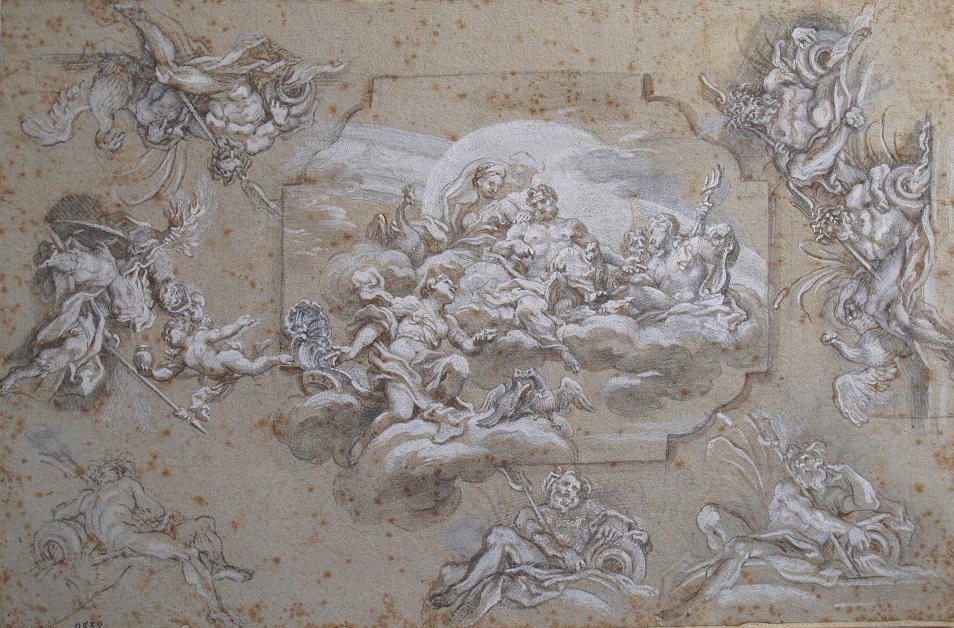
Click here to view image
Paolo Gerolamo Piola (Genova, 1666-1724)
disegno
Matita nera, penna e inchiostro, pennello e inchiostro acquerellato, biacca; carta grigia controfondata.

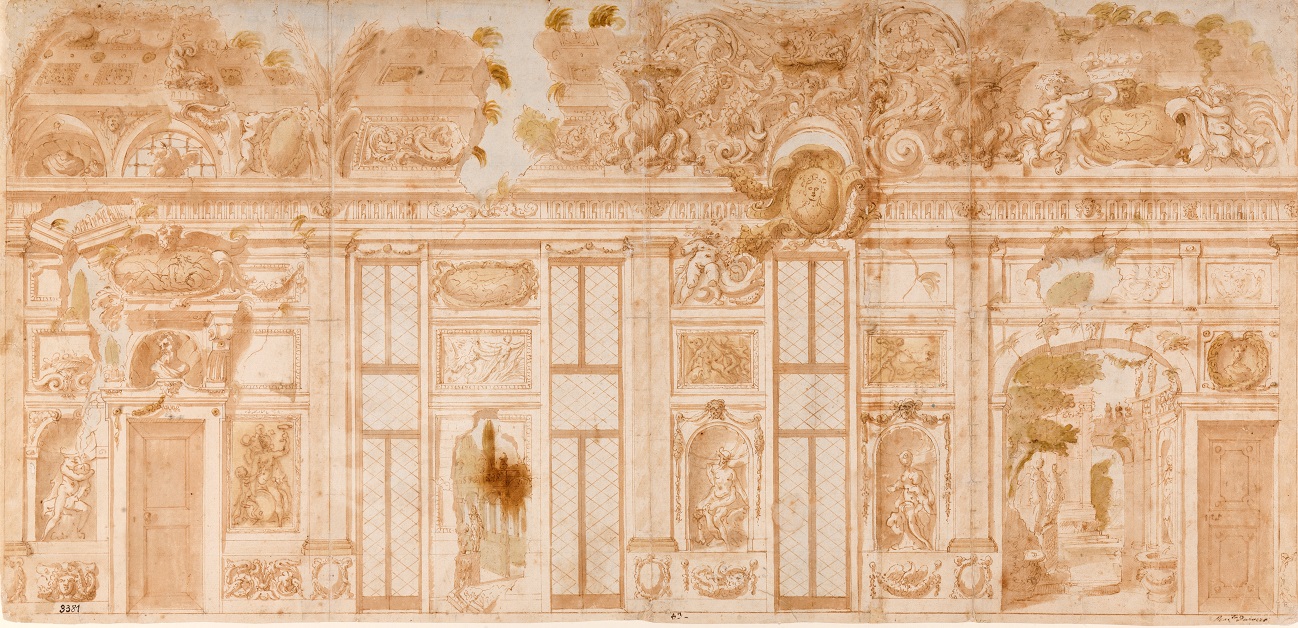
Click here to view image
Domenico Piola (Genova, 1627-1703)
disegno
Matita nera, penna e inchiostro, pennello e inchiostro acquarellato, carta bianca.


Click here to view image
Domenico Piola (Genova, 1627-1703)
disegno
Matita nera, penna e inchiostro, pennello e inchiostro acquarellato, carta bianca.

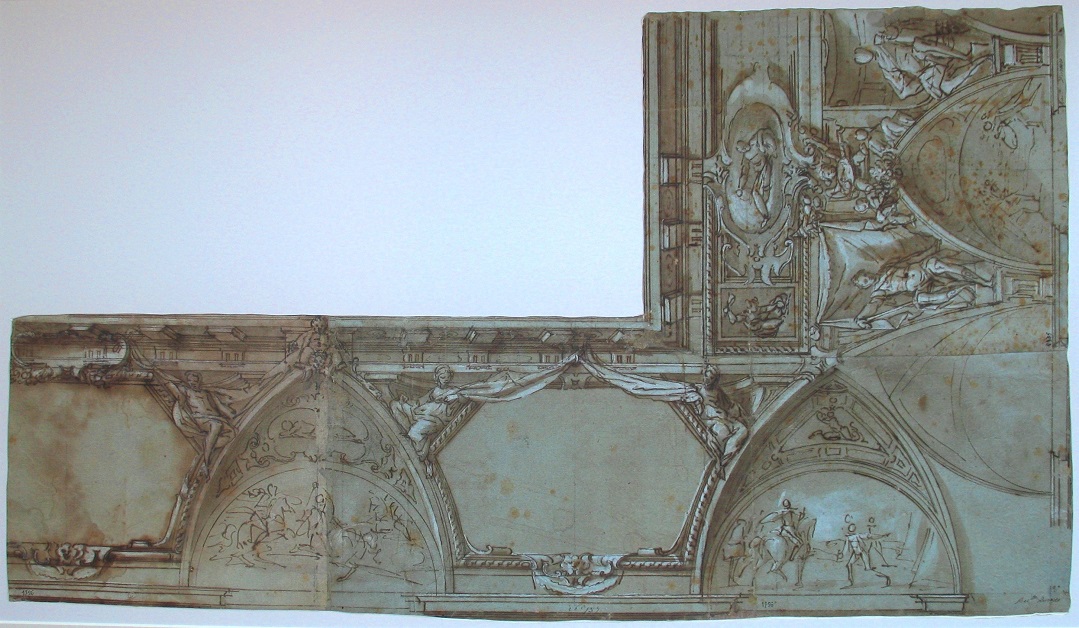
Click here to view image
Lazzaro Tavarone (Genova, 1556-1640)
disegno
Matita nera, penna e inchiostro, pennello e inchiostro acquarellato, carta cerulea.

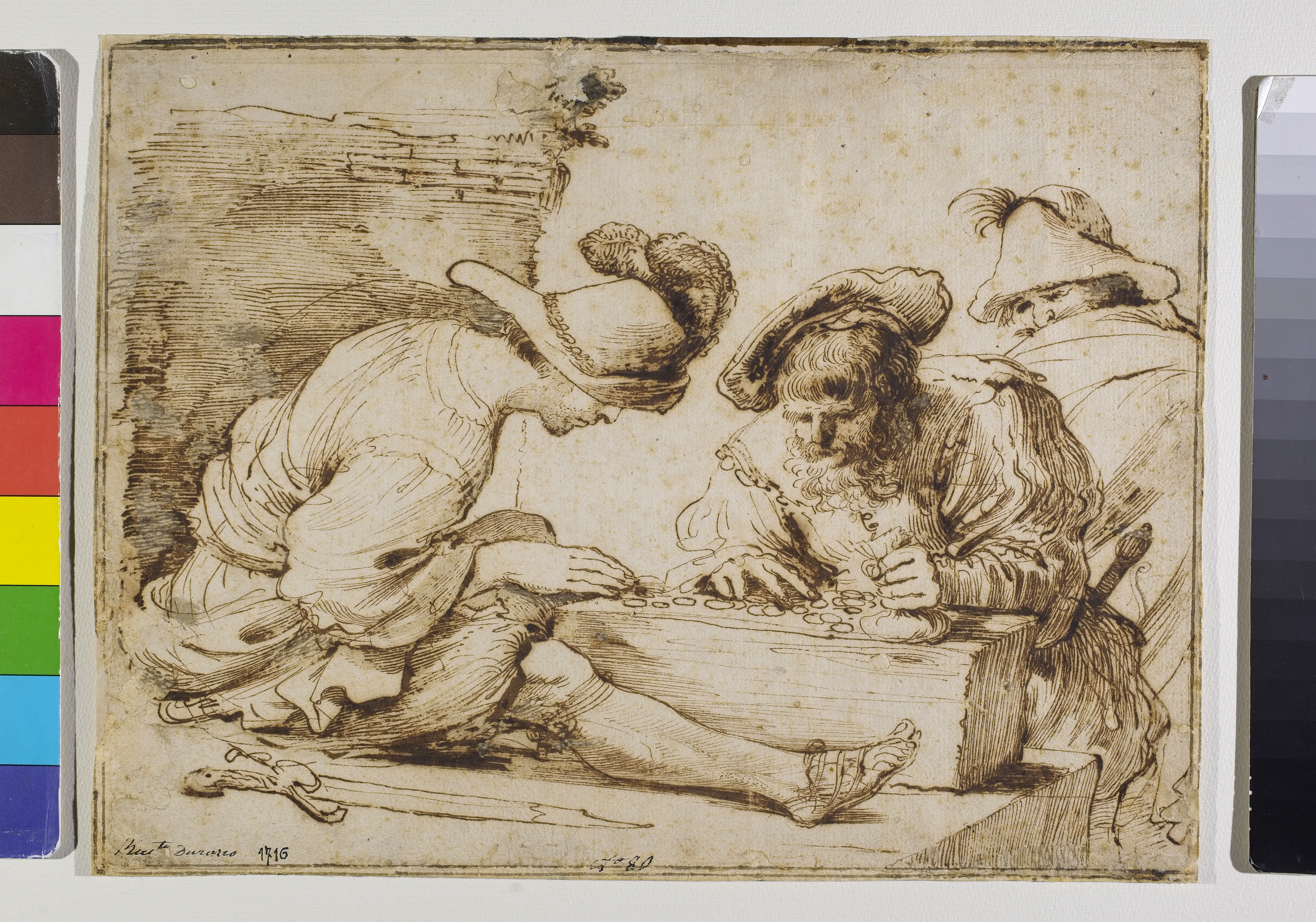
Click here to view image
Giovanni Francesco Barbieri, detto il Guercino (Cento, 1591 - Bologna, 1666)
Penna e inchiostro, pennello e inchiostro acquerellato, carta bianca. Inv. D1716.
Legato Marcello Durazzo 1848

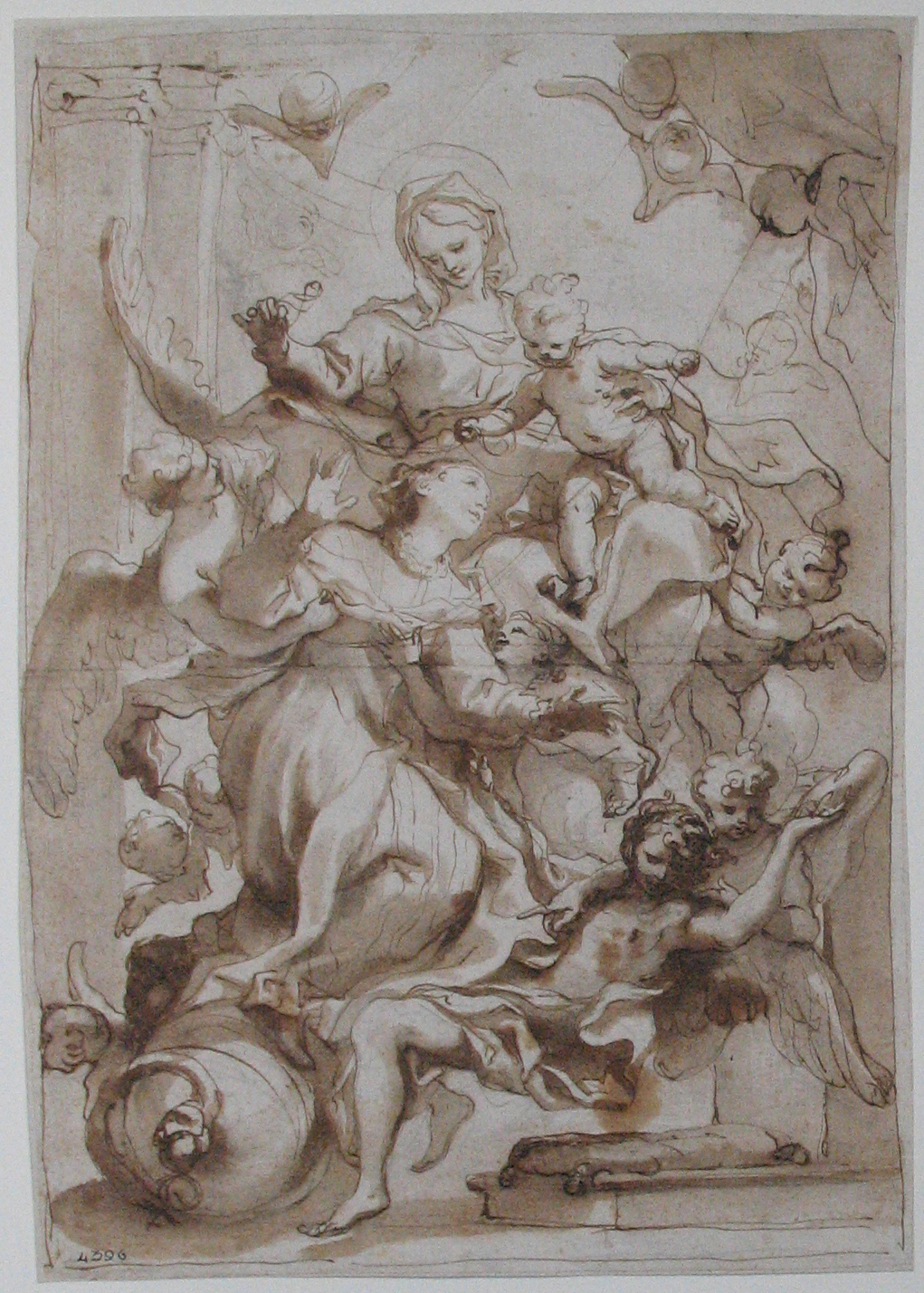
Click here to view image
Madonna with Child and Saint Catherine Fieschi Adorno
Mary Ighina Barbano
Domenico Piola (Genova, 1627-1703)
D4396
Unità di misura: mm; Altezza: 347; Larghezza: 243
This drawing, and the sheet of a similar subject also conserved in Palazzo Rosso inv. D 2676 (black pencil, pen and ink, brush and watercoloured ink; white counterfold paper. mm 251 x 182), constitute as many phases of the study for an altarpiece, painted by Piola in the early 1780s for the sacristy of the church of San Filippo Neri (but now conserved in that dedicated to St. Francis of Assisi, in Genoa-Bolzaneto), illustrating the supernatural vision that surprised the Genoese saint Caterina Fieschi Adorno (1448-1510) while she was praying, giving her the sensation of being bound to Jesus with a golden thread. In what must be recognised as the earlier study (inv. 2676), different solutions are present, some of which are taken up in the second sheet, the subject of this card (inv. 4396), or directly in the painting. The Virgin's right arm, for example, is raised in the initial black-pencil sketch, while in the ink drawing she holds the Child who, in this way, is to the left of the sitter. Catherine, who, attracted by the 'God of love', rises from her kneeler, contemplates but is not involved in the space of the supernatural vision, remaining almost distant from it. The compositional variants of the second drawing are not few, although all the elements of the first sheet return, albeit with different values: the Child is on the right, Catherine, raised in mid-air, becomes an integral part of the group centred on the figure of the Madonna, and, at the bottom right, in front of the kneeler, an angel in the form of an adolescent - stylistically revealing the influence that the much younger Gregorio De Ferrari exerted on the fifty-five-year-old Piola - replaces the barely sketched angel of the other drawing. The composition painted on the canvas repeats that of the second sheet, with the exception of the angel, who in the altarpiece returns to being a cherub, albeit in a pose more moved than the original idea; but the correspondence is such that it can be assumed that this last variation was carried out in the course of the work, i.e. without the mediation of a further graphic design. The legacies of Marcello Durazzo (1790-1848) and that of Mary Ighina Barbano - who was the niece of the sculptor, scholar and collector Santo Varni (1807-1885) and had inherited his collections - allowed the two drawings, both of which certainly came from Domenico Piola's house-studio in salita San Leonardo, to be definitively reunited within the collection of the Gabinetto Disegni e Stampe di Palazzo Rosso after having been collected at the beginning of the 19th century. Boccardo, Domenico Piola (1627-1703). Projects for the Arts, 2006; Boccardo in Domenico Piola (1628-1703). Percorsi di pittura barocca, 2017. The drawing depicts the Madonna holding the Baby Jesus in her arms, with Saint Catherine and cherubs below her.

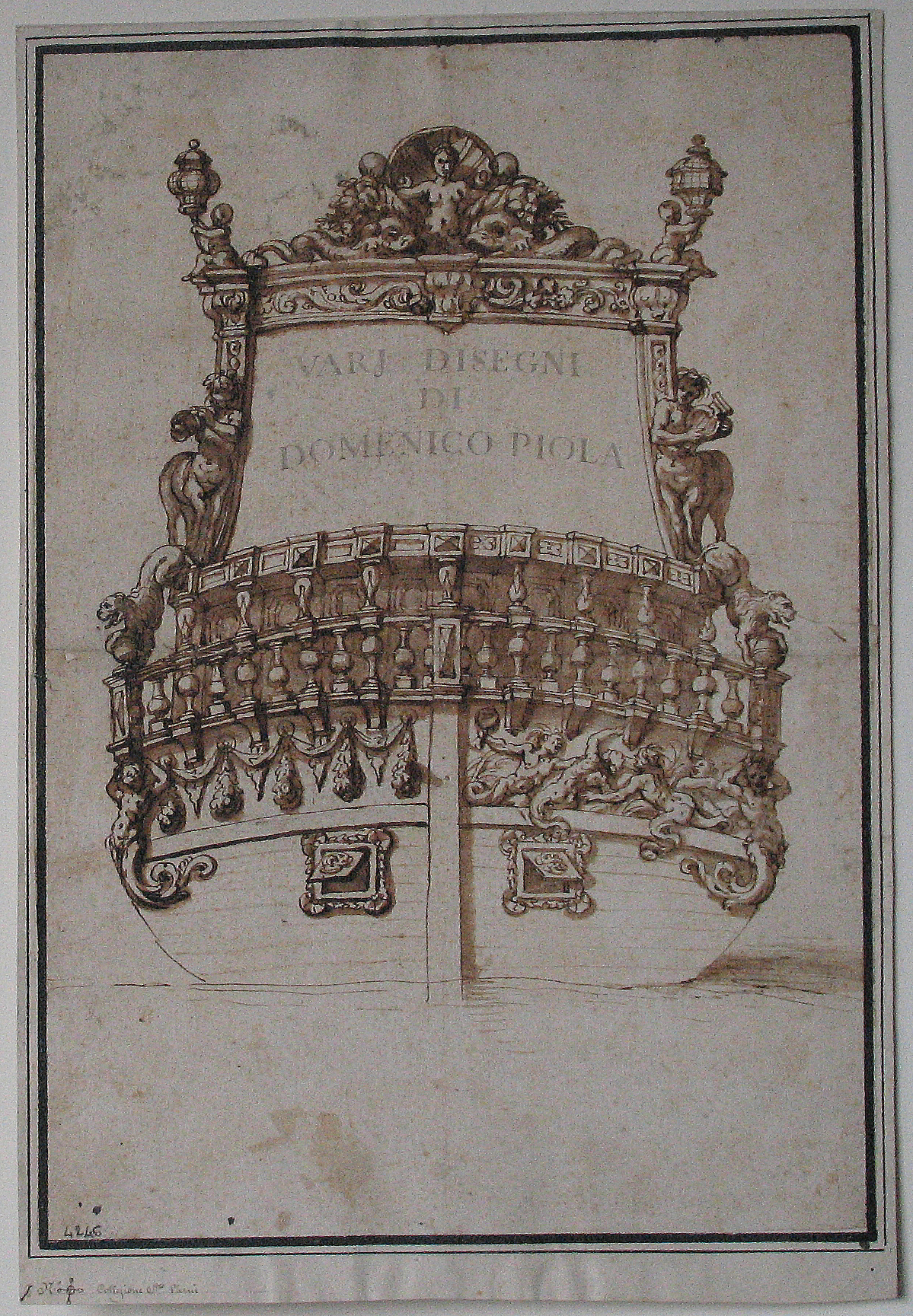
Click here to view image
Domenico Piola (Genova, 1627-1703)

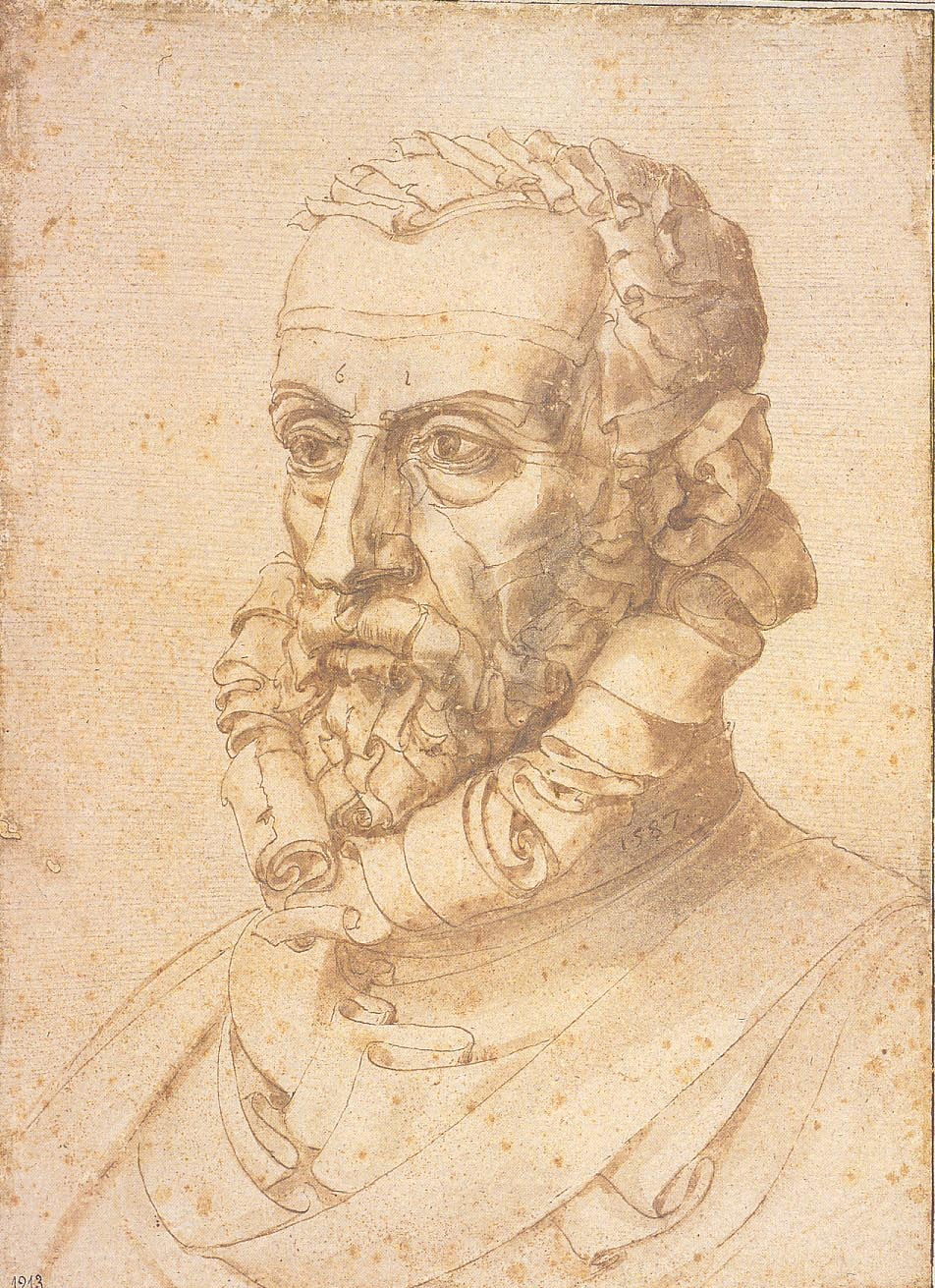
Click here to view image
Man of letters / Self-portrait
Marcello Durazzo
Giuseppe Arcimboldo (Milano, 1526-1593)
D 1213
Unità di misura: mm; Altezza: 442; Larghezza: 318
White backed paper, 44,2 x 31,8 cm
Maestri del disegno - Genova - 1990<br>Rabisch - Lugano - 1998
An astonishing self-portrait of the most eccentric master of 16th century Italy, this skilfully watercoloured pen and ink drawing reproduces the features of Giuseppe Arcimboldi's face through the artifice of rolled scrolls and sheets skilfully arranged to imitate his physiognomic features. This sheet, however, is unique in Arcimboldo's oeuvre: it is the only 'composite head' drawn on paper, as well as being one of the two known portraits of the master (the other, more traditional, is conserved at the Národní Galerie in Prague) and undoubtedly his most important graphic work. The skilful execution of the drawing ensures that only at close range does the bizarre nature of the portrait fully reveal itself, whose compositional artifice is only fully comprehensible by continually proceeding with the gaze from the particular to the general and vice versa, in a dimension of playfulness, amazement and bewilderment typical of Mannerism. This is one of the artist's most refined works, as a taste for wonder is combined with a fine attention to the natural datum typical of the master's Lombard training, certainly also deriving from his study of Leonardo's graphic work and in particular his realistic 'grotesque heads'. The sheet is dated '1587' (as stated on the handwritten annotation at the base of the gorget), when Arcimboldo was at the height of his career and - at '61' years of age, as indicated on the front of the portrait - had just concluded his more than twenty-year stay at the refined Prague court of Rudolph II of Habsburg. It is, therefore, almost a figurative testament, through which the artist significantly presents himself as a cultured intellectual and 'man of letters', legitimising a 'high', allegorical-symbolic interpretation of his own bizarre inventions. On the other hand, in the service of the emperor, amidst esotericisms and extravagant wunderkammer collections, Arcimboldo had been able to best interpret his multifaceted role as 'court painter' by creating, in addition to ephemeral apparatuses for festivals theatrical costumes, furnishings and precious objects, as well as 'composed' allegorical portraits - between naturalism and surrealism - of which he reinforced the symbolic and encomiastic aspect through ad hoc poetic texts written in his own hand or entrusted to men of letters close to him. Entering the civic collections with the Legato of Marcello Durazzo (1848) as an unknown Genoese artist, the sheet was attributed to the Lombard master by Piero Boccardo (in Maestri del disegno nelle civiche collezioni genovesi, exhibition catalogue, Genoa 1990, cat. 28). (PRIARONE, 2020) Man of letters / Self-portrait

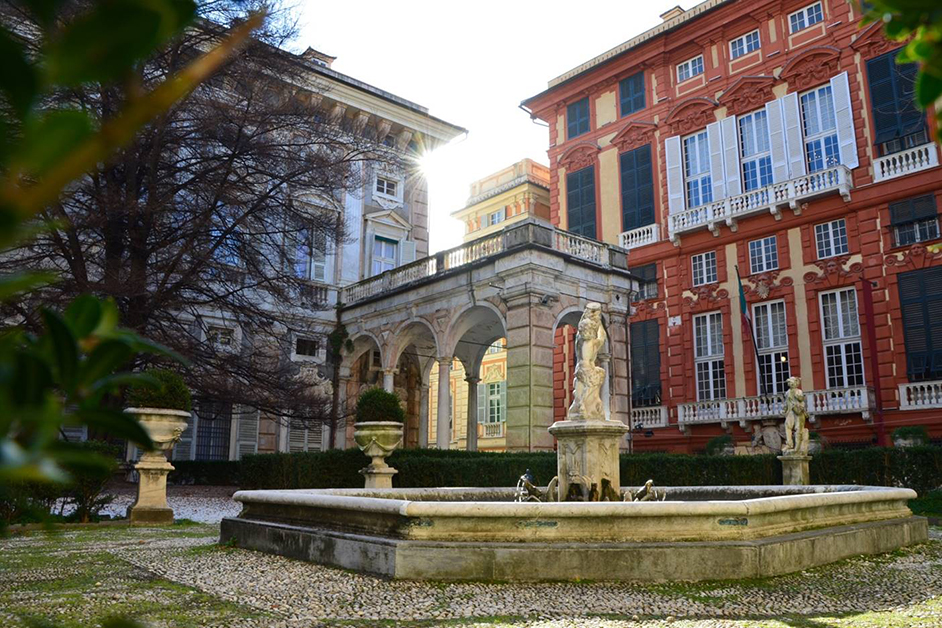
Click here to view image
Giardino inferiore Palazzo Bianco con vista Palazzo Rosso




Headquarters:
Municipality of Genoa - Palazzo Tursi
Via Garibaldi 9 - 16124 Genoa
C.F / VAT 00856920102